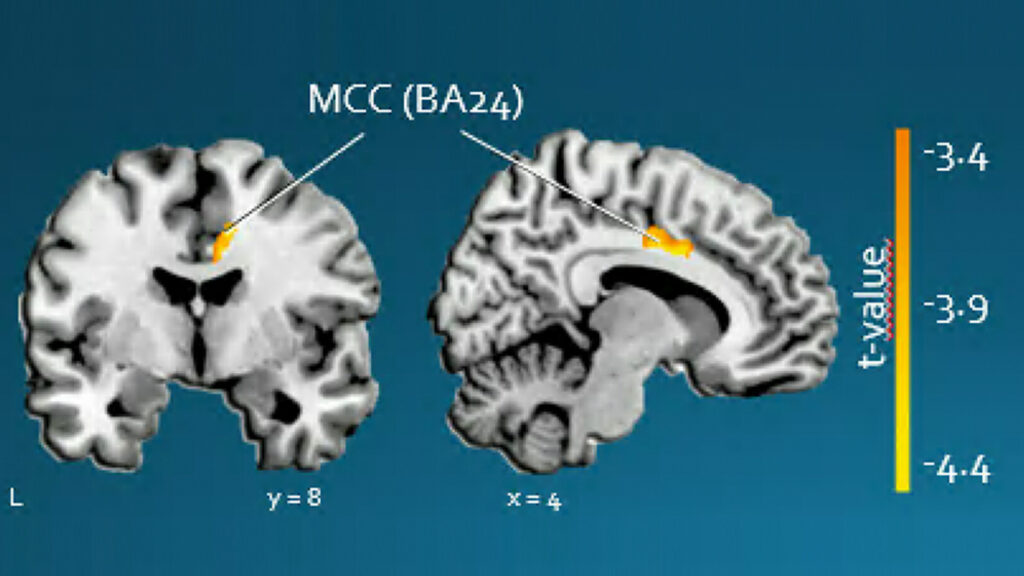The atrophy of a specific region of the cerebral cortex is related to the appearance of apathy in Huntington’s patients, a neurodegenerative disease that affects motor and cognitive function. This is the conclusion of a study of the Bellvitge Biomedical Research Institute (IDIBELL) published in the Movement Disorders journal.
These findings would permit the prediction of the severity and speed with which apathy will develop in Huntington’s patients. This represents a new tool for classifying patients based on their profile that will define the evolution of the disease.
The team of Dr. Estela Càmara, principal investigator of the Brain Cognition and Plasticity group at IDIBELL, has studied possible affected regions through magnetic resonance imaging of the whole brain that would determine the appearance of apathy. Participants in the study, 31 women and 14 men affected by Huntington’s disease, have undergone several MRIs over time. MRI results were compared with the appearance of neuropsychiatric characteristics, such as apathy.
“We have seen a clear relationship between apathy and the atrophy of the region involved in action initiation. Greater atrophy correlated with higher severity and speed of apathy development in these patients“, says Dr. Càmara. And she adds, “the vulnerability of this brain region is detectable at the initial phases, before the apathy appearance. An advantage that permits the prediction of the development traits of this neuropsychiatric character.”
Audrey E. De Paepe, the first author of the article, points out that “apathy is the most common neuropsychiatric characteristic in Huntington’s patients, and significantly affects the quality of life of patients and caregivers, impacting in their autonomy as well as in their social life“, and continues, “in addition, apathy is linked to the cognitive deterioration of patients, therefore the atrophy of this region of the cortex could also be a good indicator of the type of evolution that a patient will have“.
This work has been carried out in collaboration with researchers from the University of Barcelona (UB), the Institute of Neurosciences of the UB, the Autonomous University of Barcelona (UAB), and the Agustí Pi i Sunyer Biomedical Research Institute (IDIBAPS). Different hospitals have also participated in the study, such as Hospital de la Santa Creu i Sant Pau, Hospital Universitari de Bellvitge, Hospital Clínic, or Hospital Verge de la Mercè.
The Bellvitge Biomedical Research Institute (IDIBELL) is a biomedical research center created in 2004. It is participated by the Bellvitge University Hospital and the Viladecans Hospital of the Catalan Institute of Health, the Catalan Institute of Oncology, the University of Barcelona and the City Council of L’Hospitalet de Llobregat.
IDIBELL is a member of the Campus of International Excellence of the University of Barcelona HUBc and is part of the CERCA institution of the Generalitat de Catalunya. In 2009 it became one of the first five Spanish research centers accredited as a health research institute by the Carlos III Health Institute. In addition, it is part of the “HR Excellence in Research” program of the European Union and is a member of EATRIS and REGIC. Since 2018, IDIBELL has been an Accredited Center of the AECC Scientific Foundation (FCAECC).

